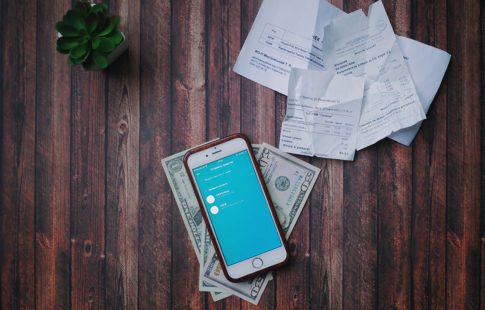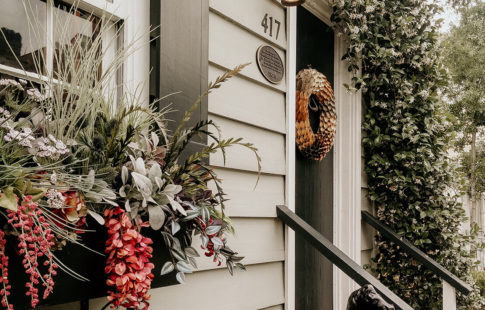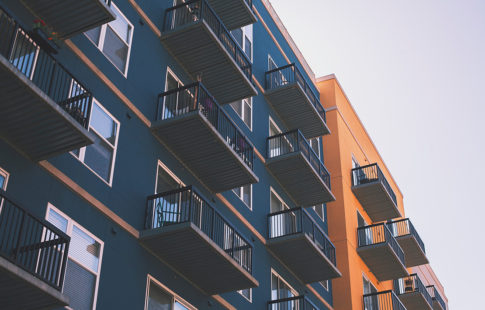Estimated reading time: 5 minutes
After a natural disaster, such as a winter storm, hurricane, tornado, or wildfire, we understand that your first priority is the safety and well-being of you and your loved ones. Among all of the challenges that may follow, there are steps available to help ensure your home and finances are protected.
Three steps you can take include:
- Filing claims with insurance providers for damages related to the disaster.
- Applying for mortgage assistance with us.
- Registering for disaster assistance with state and federal agencies. (This assistance may cover expenses that your insurance company doesn’t.)
Here are a few tips to help you through the process of taking these steps.
Filing an insurance claim
1. Contact your homeowners insurance provider. Start the claim process by providing details to your insurance carrier(s) of the damage and loss sustained as a result of the disaster. If flood damage occurred and your flood insurance is provided through FEMA’s National Flood Insurance Program (NFIP), you can find information on starting a claim with them and your insurance company at FloodSmart.gov/start.
If your flood insurance is provided through a different program or insurer and you are facing long hold times when trying to contact them by phone, bear in mind that many insurers allow customers to start claims online or via their mobile apps. Some insurers set up mobile claims centers in disaster impacted areas for you to visit.
If you are able to do so, document damage before making any repairs to the property and keep photos and videos for your records. Your insurer may also allow you to report this damage quickly and remotely via live video captured on your smartphone. If you’re concerned about documenting roof and other exterior damage safely, see if your insurance company can use drone or satellite images to aid in the process.
Throughout the claims process, save receipts related to any repairs and other costs incurred after the disaster (for example, living expenses). These efforts will potentially help in discussions with your insurance carrier in resolving the claim.
2. If your loss is covered, your insurance provider will assign an adjuster to your claim. The adjuster will work with you to assess the property damage and come up with an estimate of the repair costs.
3. Once the adjuster’s cost estimate is complete, your insurance company will send a loss draft check (or claim check) to you to pay for repairs. This check will be made payable to both you and Mr. Cooper. Once you receive the check, please contact our Loss Draft Department at 866-825-9302 or go to www.insuranceclaimcheck.com for instructions on the handling of the check.
Typically, you will need to endorse the check and forward it to us at one of the following addresses, along with some other documentation (see next section). We will then either endorse the check and return it to you OR deposit the check into a loss draft account and then issue you a new check.
Regular Mail
Mr. Cooper
Attn: Loss Drafts Department
PO Box 6501
Springfield, OH 45501-6501
Overnight Mail
Mr. Cooper
Attn: Loss Drafts Department
One Assurant Way
Springfield, OH 45505
Note: If you need to provide a recipient’s phone number on your mailing label, list 866-825-9302.
4. Depending on the loan status at the time of the disaster or the amount of the loss draft check, we may require additional documentation before releasing the insurance funds. Along with the endorsed insurance claim check, some of the typical documents we may require include:
- Insurance company adjuster’s worksheet
- Signed contract/proposal with your contractor
- Contractor’s waiver of lien
- Contractor’s W-9
- Copy of the contractor’s license
While you work directly with your insurance provider, our team is here to help you with every step in the insurance claim process. You can reach our Loss Draft Department at 866-825-9302 for assistance. You can also submit these documents to us at www.insuranceclaimcheck.com or fax them to 866-411-8857.
Applying for mortgage assistance
1. Call us at 833-685-2565. Tell us how you have been affected and provide us with updated contact information, if you have been temporarily relocated.
2. If your home or income was impacted by the disaster, we may be able to provide you with additional assistance. Depending on your loan, this assistance may include a Disaster Forbearance Plan with benefits, such as:
- Suspended or reduced mortgage payments for a period of time
- Credit protections
- No late fees
Registering for additional disaster assistance
1. Register for federal disaster assistance—especially if you’re underinsured. To register, visit DisasterAssistance.gov or call FEMA at 800-621-FEMA (3362). (For TTY calls, dial 800-642-7585.) This step is recommended even if your home is not in an official disaster area, as undeclared areas can be added at a later date (you can check for updates on declared areas with FEMA’s search tool for declared disasters). With this assistance, you may be eligible for benefits and resources that are not covered by your insurance company.
2. Look into additional options offered by your state or local agencies. Contact agencies such as your:
- State’s and county’s emergency management offices
- Department of health and human services
- Governor’s office
They may provide access to resources other than those provided by the federal government or your insurance company. You can find helpful resources like these at fema.gov/locations by entering your city and state or zip code. Once your state’s page appears, select the “Helpful Resources” option. USA.gov also links to local resources.
3. Reach out to helpful organizations. Non-profits and other organizations may also be able to assist you. Helpful organizations include:
- Red Cross: Visit the Red Cross Get Help page or call 1-800-RED-CROSS.
- 211: Visit 211.org for disaster assistance resources or call 2-1-1.
- Salvation Army: Visit the Salvation Army Disaster Relief page.
Beware that scammers may try to take advantage of you in your time of need by posing as a non-profit or government official. Home repair scams and price gouging efforts also increase after natural disasters. That said, consider finding a contractor through a recommendation from someone who can vouch for their work, obtain multiple offers, and finalize the agreement in writing. Also, be on guard for contractors who ask for large amounts of money upfront or provide very low bids. For more information, see our blog on finding a contractor and the Consumer Financial Protection Bureau’s tips on preventing fraud.
By making the most of every opportunity open to you, we hope you will walk away from a natural disaster financially sound and with your dream of homeownership secure. Whenever you need us, we will be here to help you.







